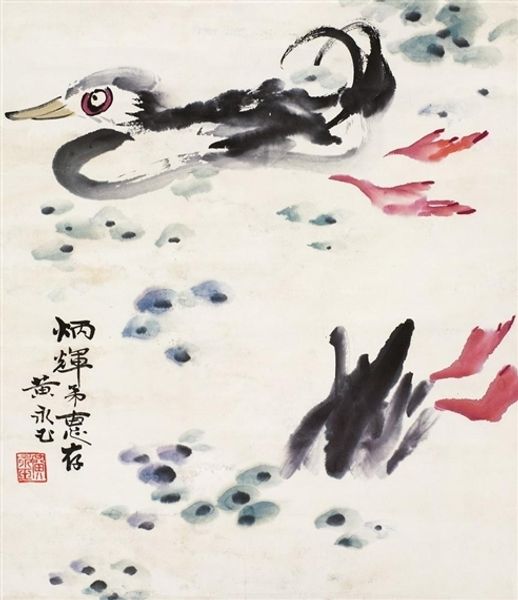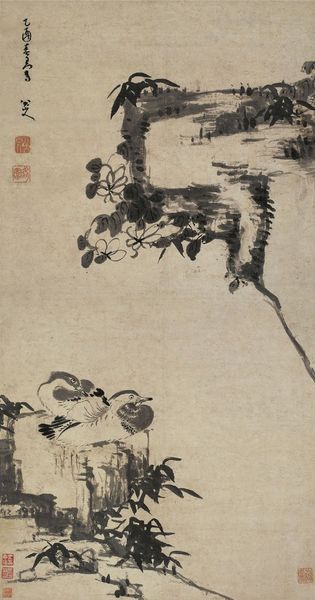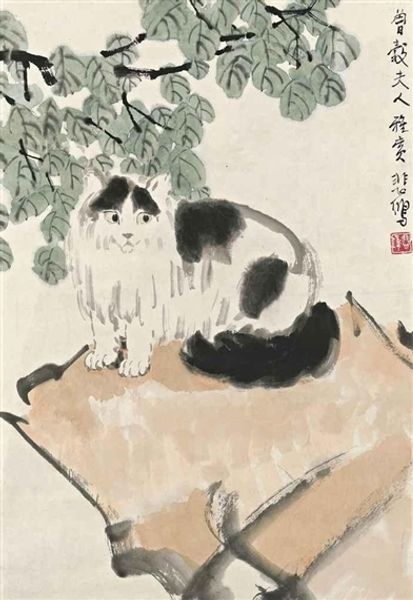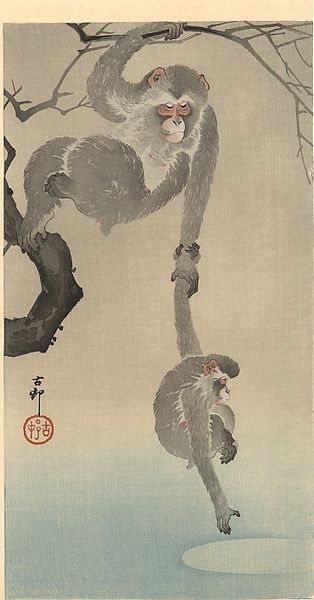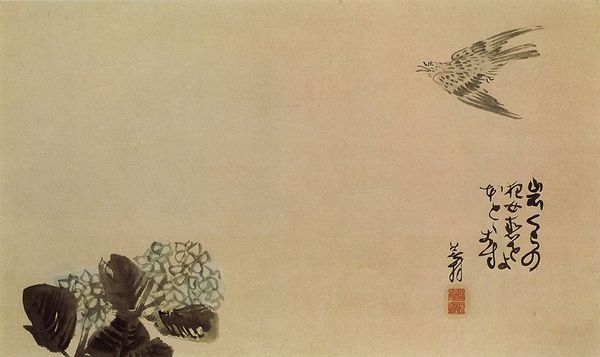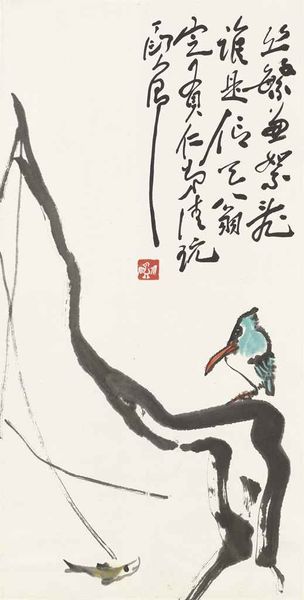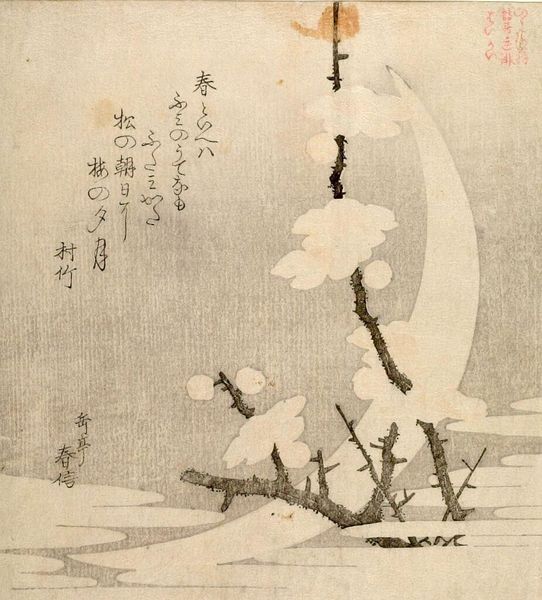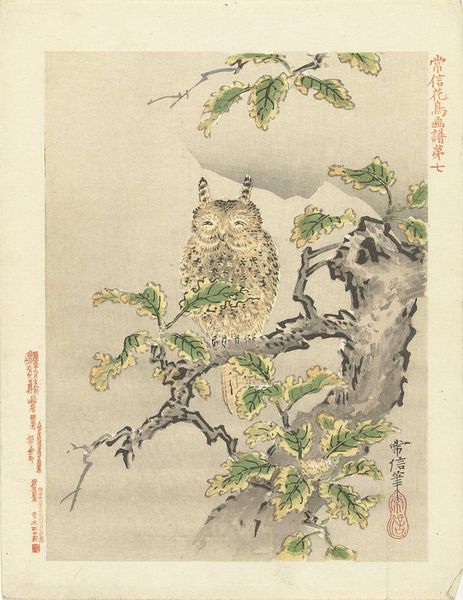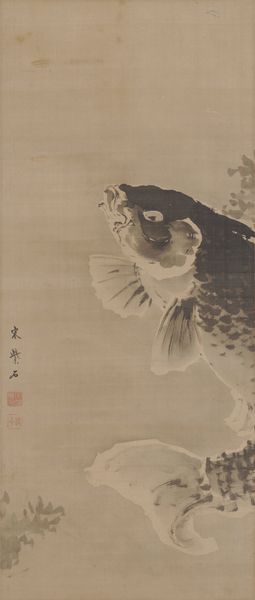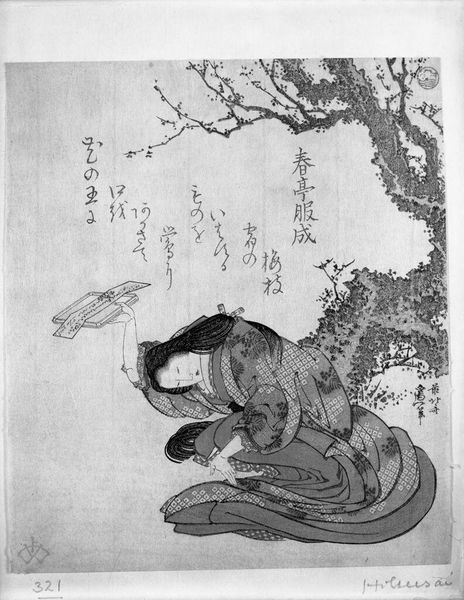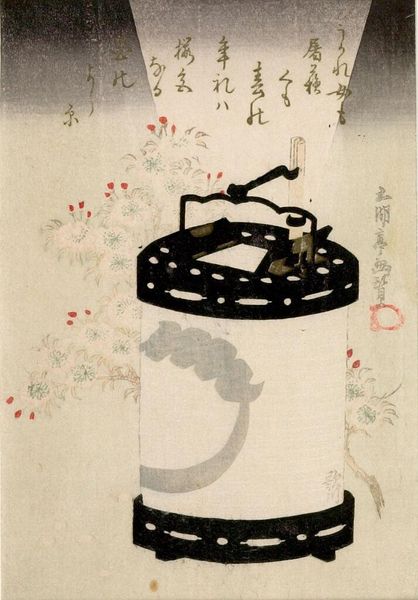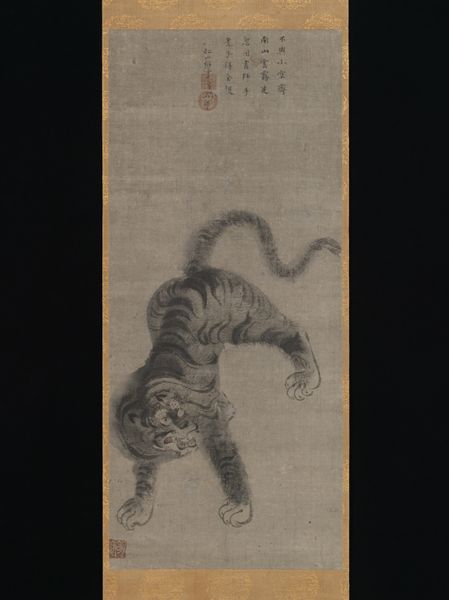
painting, paper, watercolor, ink
#
painting
#
asian-art
#
paper
#
watercolor
#
ink
#
orientalism
#
watercolor
Copyright: Public domain China
Editor: This is Xu Beihong’s "Kitten with Butterfly," painted in 1944 using ink and watercolor on paper. It’s charming; I'm struck by its delicate brushstrokes, but how would you interpret this piece? Curator: Consider the dynamism created by the juxtaposition of the static, seated kitten, and the butterfly in motion. The stark contrast between the dark ink washes of the kitten's fur and the lightness of the paper contributes to a visual tension. How does this push-and-pull between stillness and movement affect your reading of the work? Editor: I see what you mean. The artist seems to be exploring contrasts, between the solid kitten and airy butterfly, but also with the texture of the rocks, that seem flatly represented, yet give a 3D illusion. Curator: Precisely. Beihong’s expressive brushwork generates contrasting textural elements that enrich the piece's complexity, and it also adds depth to the otherwise minimalist setting. This attention to brushstroke technique, and deployment of blank space—essential elements of traditional Chinese painting—create a potent formal tension. Note, too, the relationship created between calligraphic inscription and the main image. Editor: Ah, the inscription! It's part of the work's formal construction as much as the painted elements, isn't it? The texture almost mimics the fur. Curator: Precisely. Form is content here. Editor: I never really looked at Chinese painting like this. Thanks for pointing out these formal qualities; I notice the textures, the line quality, and relationship between word and image so much more now. Curator: You’re most welcome; thinking this way helps us notice so much.
Comments
No comments
Be the first to comment and join the conversation on the ultimate creative platform.
